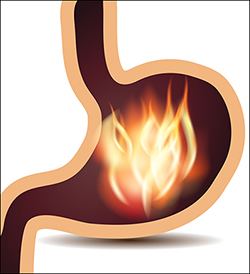HOW AYURVEDA WORKS
By
Dr kavita vyas(vyaskavita007@gmail.com)
Many people have different kinds of questions about Ayurveda therapy e.g.
1. Whether ayurveda cures the diseases? If yes then what kind of diseases.
2. How ayurveda works?
3. Do ayurveda cures the diseases after long time?
4. why so many do’s and don’ts in food while we take ayurveda medicines.
In this article we are going to give answers of these questions and also detail information about ancient diagnosis methods of ayurveda.
Point wise
Point wise
Answers -
Q.1.Whether ayurveda cures the diseases? If yes then what kind of diseases.
Answer 1.Yes ayurveda cures almost all diseases except fractures of bones and some organ replace ment and surgerys. Some doctors who have done MS in ayurveda they are also doing few surgery because Acharya sushruta who is consider as father of surgery is an Ayurveda Acharya.and mentioned different linds of surgery in sushrut samhita.
Q.2 How ayurveda works?
Q.3. Do ayurveda cures the diseases after long time?
Answer 3.- Ayurveda do not take long time to treat the disease if you see the end resul. Ayurveda treat the disease from the root. Ayurvedic treatment is not only the symptomatic treatment.A qualified Ayurvedic doctor searches the root cause of disease and then he prescribes the medicine to remove the root cause. If you take paracetamol for fever , it is just suppressing high temperature for three four hours but not treating your fever. But if you take ayurveda medicine for fever it will treat the root cause of fever i.e. impairment of jathargani. Also there will be no side effect of ayurveda medicine, but after taking paracetamol for two days you will feel high weakness in the body. So finally as a patient you decide which is giving you benefit in fever paracetamol which gives temperory reliefe or ayurveda medicines which will bring your fever down by treating the root cause. In some chronic diseases doshas of body gets accumulated in more quantity in those diseases allopathy do not have cure except surgeries and after surgery also no gyaranty of reliefe for long time.e. g. rheumatoide arthritis, skin diseases, asthma etcIn Ayurveda to eliminate the aggravated doshas/toxins from the body there are different purification methods are prescribed under Panchakarma.
Q.4. why so many do’s and don’ts in food while we take ayurveda medicines.
Answer 4.- If we are cleaning the cloth and after cleaning again we put mud on that cloth then will that cloth get cleaned? In the same way if we are eliminating aggravated doshas responsible for the disease from the body and same time person is eating food which again aggravates the doshas then how the disease will get cure? For curing the disease from root person needs to follow some diet regimen during ayurveda treatment.Q.5. Ayurveda has any side effects?
Answer 5.- Generally ayurveda medicines if taken in proper quantity under guidance of experienced ayurveda doctor will not give any side effect. Sometimes we eat food in more quantity or purchase contaminated food then food can cause food poisoning. Same way if you purchase ayurveda medicine from chemist directly without knowing quality and dose of medicine then it may create problem.Diagnosis Methods of Ayurveda-
Ashtavidha Pareeksha
It includes eight methods of diagnosis.
1. Nadi pareeksha (Pulse Diagnosis)-
Nadi pareeksha in ayurveda doesn’t mean only the counting pulse rate. Nadi pareeksha it self is a different subject,which is scientifically explained by the ancient ayurveda scholars like Maharshi Poulastsya, Maharshi kanada and Achrya sharangdhara etc.
Under this science of Nadipareeksha an experienced ayurvedic consultant examine the pulse of the patient when he/she is empty stomach.By examining pulse that consultant can tell the whole picture of doshas of your body, what diseases you are suffering from and how long treatment you require and many more things about your self, also he can explain you some features about your personality which you only know. In India there are selected people who are doing nadipareeksh. After practicing for years, one gets fine tuning in diagnosis of diseases through Nadi pariksha.
2. Mutra pareeksha (Urine examination)-Under this different traditional way of examining the urine are explained, These methods are very scientific. In a clean vessel collect the early morning urine in mid stream. Observe the color, if the color is blackish brown, this indicates a Vata disorder, if the color is dark yellow, this indicates a pitta disorder, also when body has less intake of water color will be dark yellow.If the urine is cloudy, it’s a Kapha disorder. Red color in the urin indicates a blood disorder.
Tail Bindu Pareeksha (Oil drop test) Put one drop of sesame oil (with a dropper) in the sample of urine, if the drop spreads immediately, the physical disorder is easy to cure, if the drop sinks to the middle of the sample, means disorder is difficult to cure, if the drop sinks to the bottom of the sample, then the illness is very difficult to cure. If urine has a foul odor that indicates, there are toxins in the system. A sweet smell of urine indicates possible diabetic condition.Ayueveda says if ants are making groups on the urine that means diabetes is there, because ants like the sweet tastes.
3. Mala pareeksha (Stool Examination) - Under this the ancient ayurveda scholars has given methods to examine the stool, which are helpful in knowing disorders of the digestive system.If stool floats on the water surface, it indicates there is no Ama Dosha in the system.If the stool sinks in the water or it is sticky in nature , this indicates there is Ama Dosha in the system.So one should take anti ama diet.
4. Jihva Pareeksha (Examination of the Tongue) - This examination is very useful and modern days doctors also do this.
5. Shabda Pareeksha (Examination of Speech) - When a patient talks, a physician can know lot of things about patient by his way of talking and quality of speech.
6. Sparsha Pareeksha (Examination by Touch) - Nowadays this method is known as palpitation and percussion.
7. Drug Pareeksha (Examination of Eyes) - By seing the eyes of patient a physician can know lot of things. Coulor of the eye, size of the eye, redness in the eye and other features denotes different diseases and doshas.
8. Akriti
Pareeksha (Examination of Physic) - By observing the body buildup or physic of a patient, physician can know his/her health condition.
# Some other methods like prashna pareeksha (questioning) also mentioned in ayurveda, we can say it is like history taking, by asking different question to the patients. Modern doctors also take history in the same way.
After diagnosis of the diseases, they are categorized in three levels.
1. Sukhasadhya - The one which is easy to cure, is called as sukhasadhya disease.
2. Kricchasadhya - The one which is not easy to cure is called as Kricchasadhya disease.
3. Asadhya - One which can not be cured, is called as Asadhya disease.
1. Sukhasadhya - The one which is easy to cure, is called as sukhasadhya disease.
2. Kricchasadhya - The one which is not easy to cure is called as Kricchasadhya disease.
3. Asadhya - One which can not be cured, is called as Asadhya disease.
 |
Ayurvedic lifestyle |
(Watch below



![ACHARA RASAYAN in Ayurveda [Behavioural regimen which acts as Rejuvenation]](https://blogger.googleusercontent.com/img/b/R29vZ2xl/AVvXsEgWmm8CupFTu_vyWDtEsY9EdG8A-ZlQLOdx6lrm4qnctDJ1bli1zR7MQMebwL79XhXowikAcqIk-al0sQubhTttS6H69e3zIBK-UORc5BFH9eaWwkznPG-yWHqoQ-za1gNhVqwgwomwUiKA/w680/Screenshot_20191227-154658_YouTube.jpg)

0 Comments